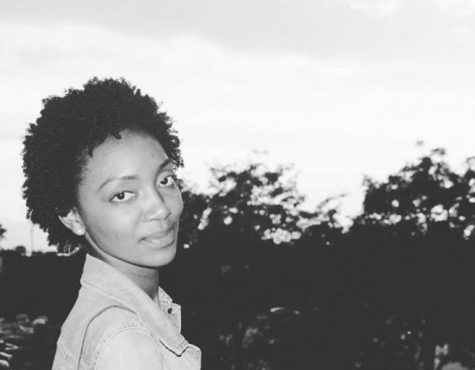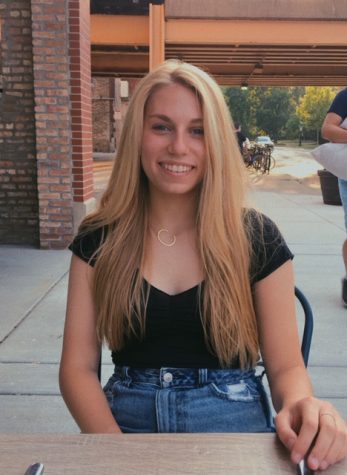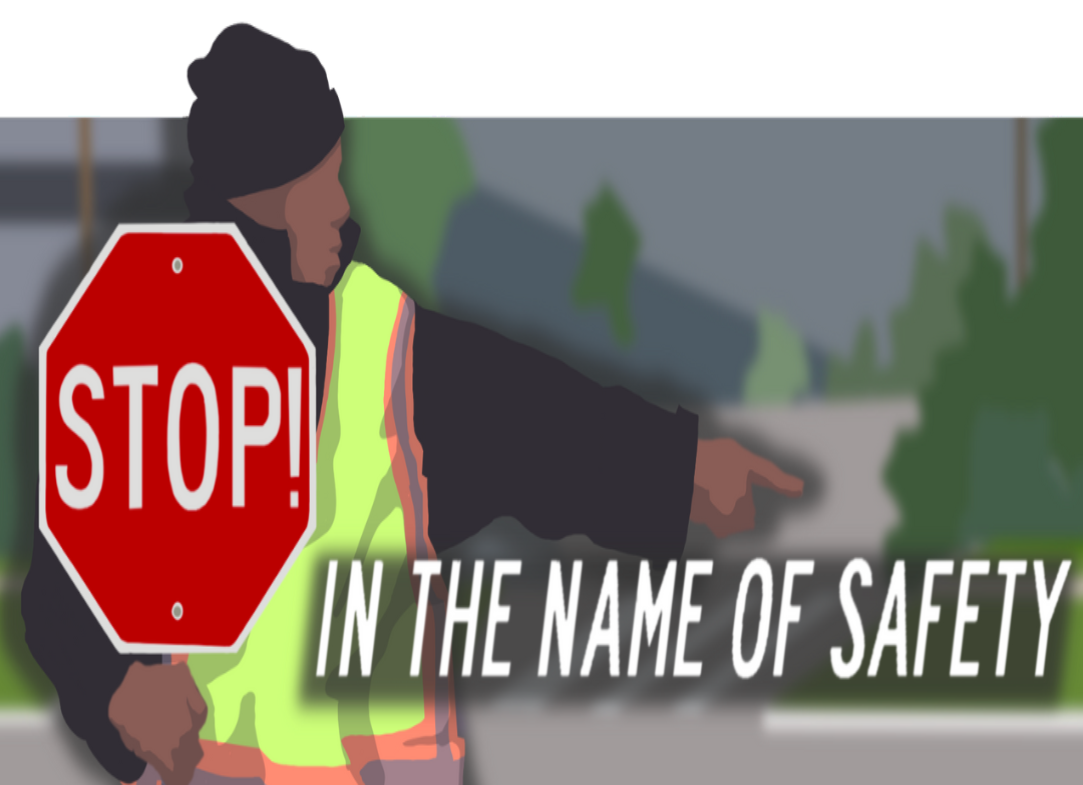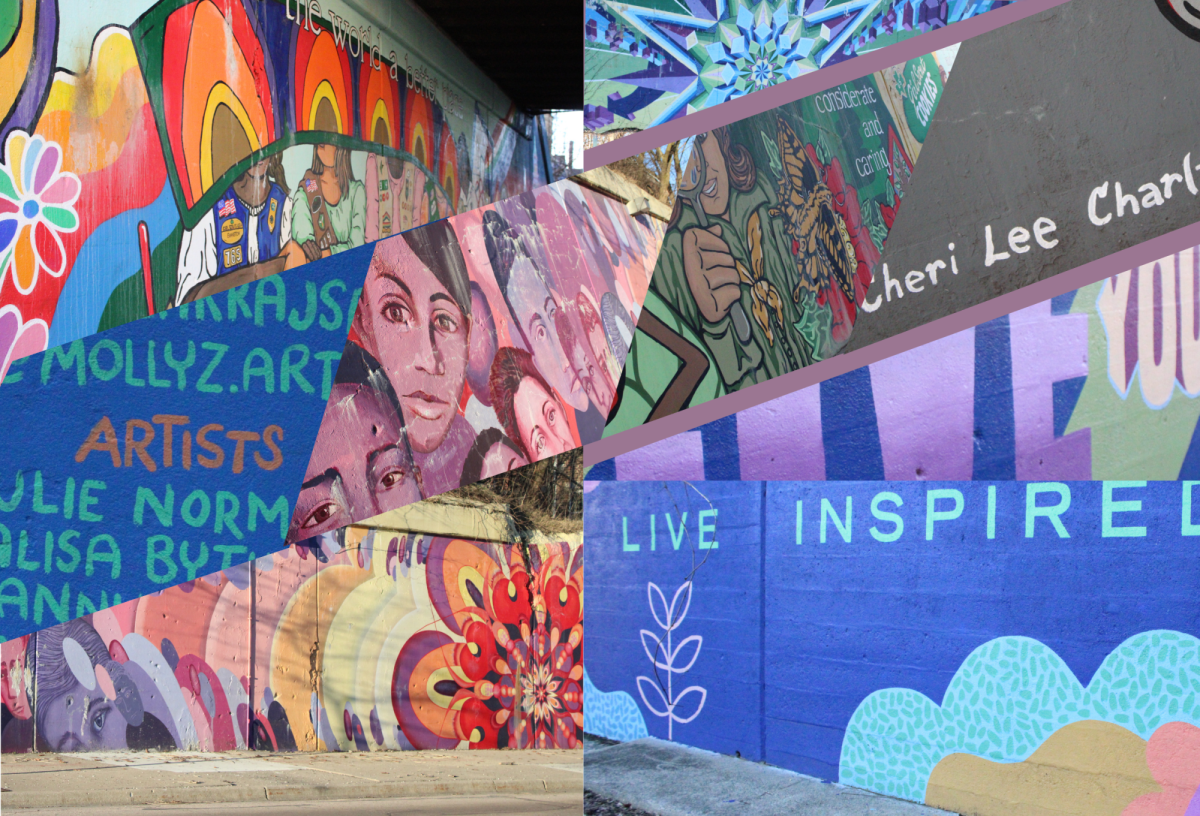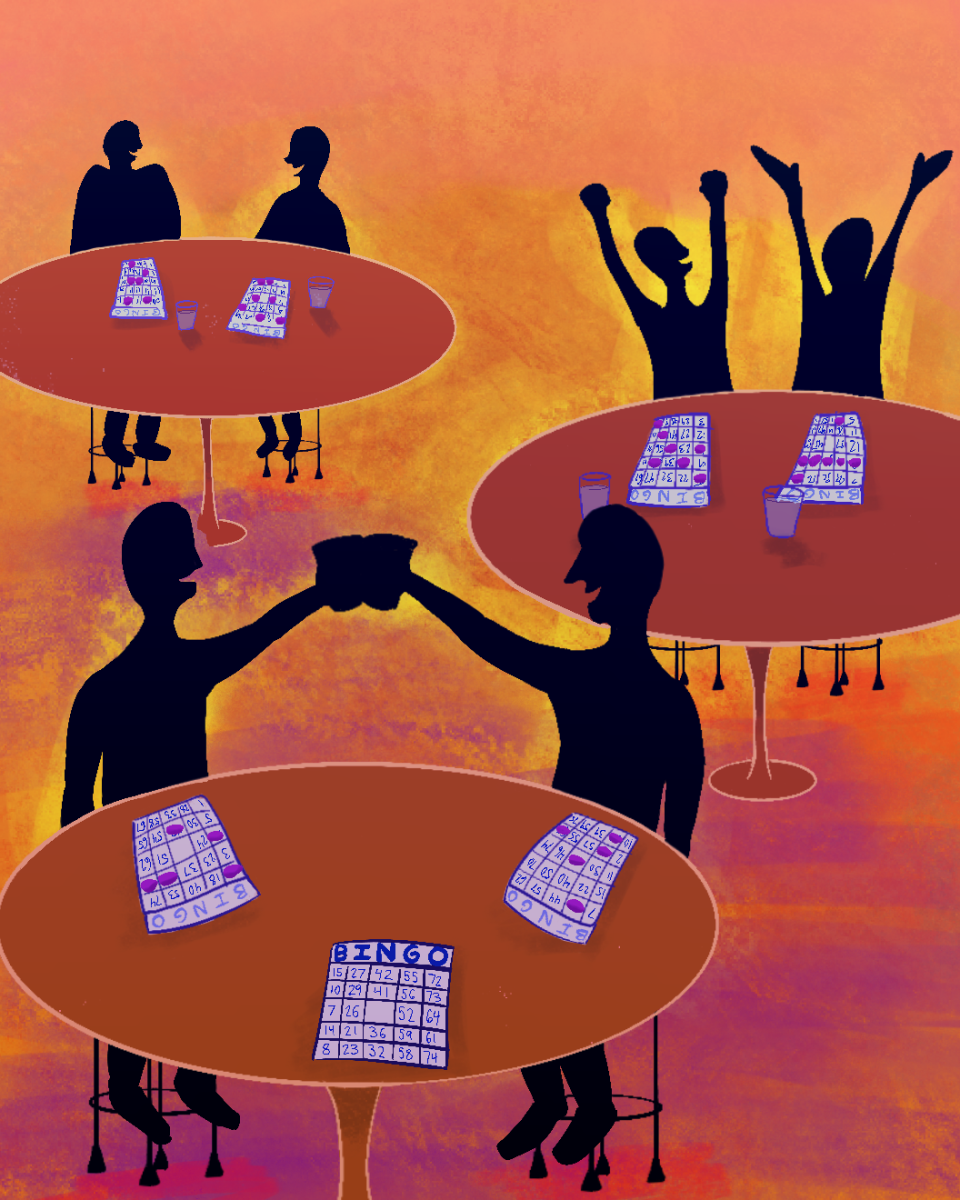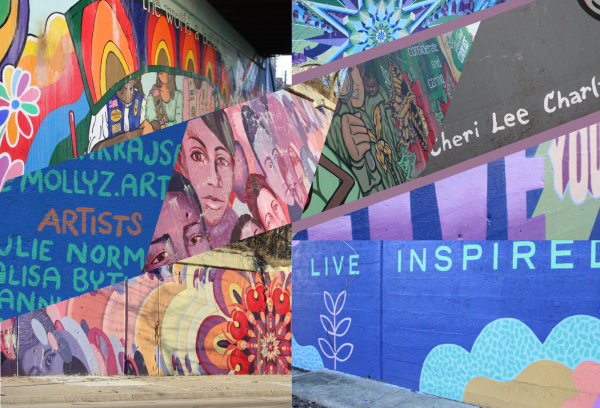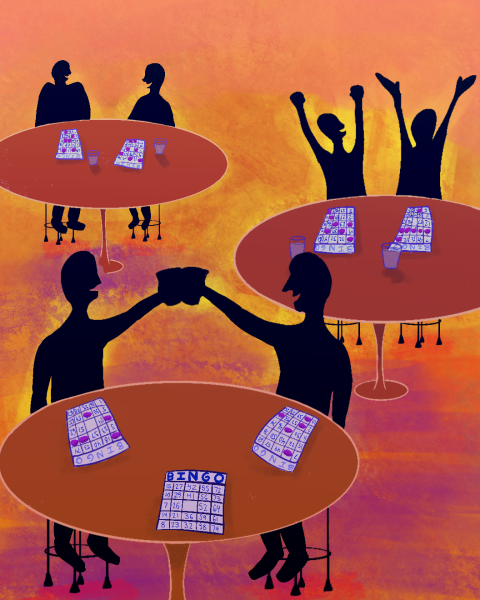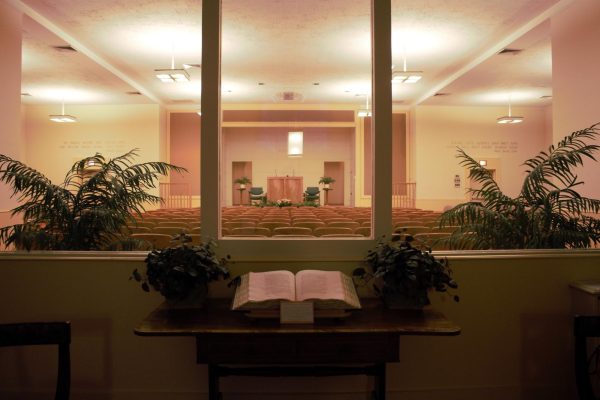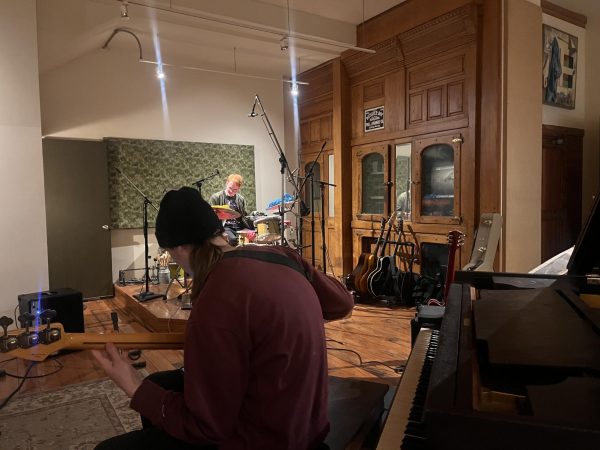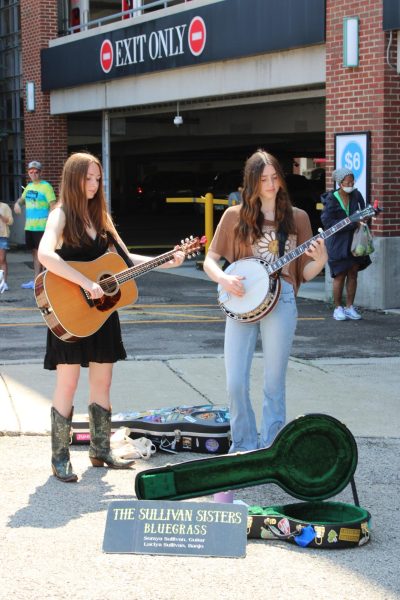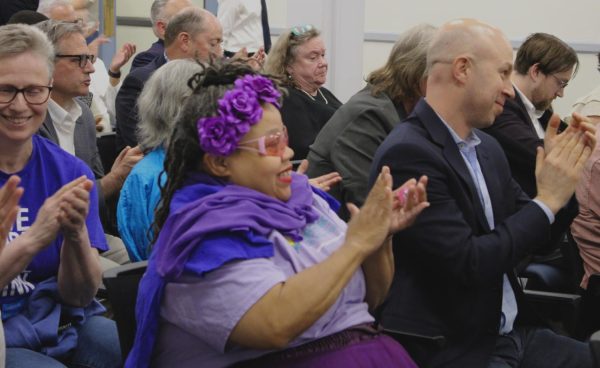Conflict in student section ignites racial tension
March 23, 2018
Friday nights are an exciting time at ETHS. Students fill the stands of Beardsley Gym to watch the basketball team play. However, the ETHS student section at popular sporting events is often dominated by a majority of white students, leaving students of color to feel excluded.
Take the Friday, Feb. 17, home basketball game against New Trier, for example. At this game, seniors Sinobia Aiden and Maia Robinson led a group of senior students of color who wanted to change this dynamic. Their plan: arrive to the game about two hours early to get good seats within the student section of Beardsley Gym. To further this statement about the social culture at ETHS, students chose to wear black clothing instead of the usual white-out themed attire.
Aiden was first motivated to address this problem after attending the Niles North game. ¨It was like being surrounded by a sea of whiteness. It was really telling and didn’t represent the student body of ETHS at all,” she says.
As the game against New Trier was about to begin, many students, who usually sat in the student section, were surprised to see there wasn’t as much space for them. “The student section is always filled with the same group of white people and they are always very exclusive about sitting there,” says senior Shea Martell, who has seen an immense degree of segregation within the senior class.
While some believe the clear segregation at the game was more so a declaration of seniority than a showcase of racial discrimination, Robinson’s observations at the preceding game against Niles North caused her to question that sentiment. Reflecting on her experience at that game where she witnessed white seniors insisting that a group of black sophomores to get out of ‘their’ seats, Robinson says, ¨I think it’s simple: if you get there early then you have the right to sit wherever you want.”
Along with telling others to get out of their seat, there are claims that some students whose usual seats had been filled acted inappropriately, refusing to sing the same chants, and throwing trash towards students of color in defiance.
However, students of color weren’t the only ones to notice a racially-based divide. In response to a picture of the student section, senior Jensen Briggeman professed, ¨If we as white people don’t call out that kind of behavior, WE are the problem. We cannot even begin to relate to the oppression POC have faced in their lives, so when they express that there was blatant racism..it our job to listen and contribute to change any way we can.”
Following this event, students took to social media to discuss what they witnessed and experienced at the game, some likening the adversarial actions to that of sit-in antagonists during the Civil Rights era.
Currently, ETHS administration is looking into this incident and figuring out ways to address similar racial conflicts that may occur moving forward. ETHS Principal Marcus Campbell has certainly noticed an increase in the number of reported racial conflicts, particularly between black and white students.
“I think that as some students have become more racially aware because we have talked about race so much, that has created a dynamic where a lot of kids are far more active about reporting,” says Campbell.
He believes the conflict at the Feb. 17 basketball game stems from a trend of self-segregation frequently seen among students at ETHS.
“It is my hope and it is my expectation that students would not intentionally marginalize other students because of the color of their skin. That is not the Evanston Township High School that we are because that’s not what it really means to be a Wildkit,” Campbell says.
ETHS administration has communicated that this behavior will not be tolerated and needs to be addressed in order to make progress towards more unity among the ETHS student body.

